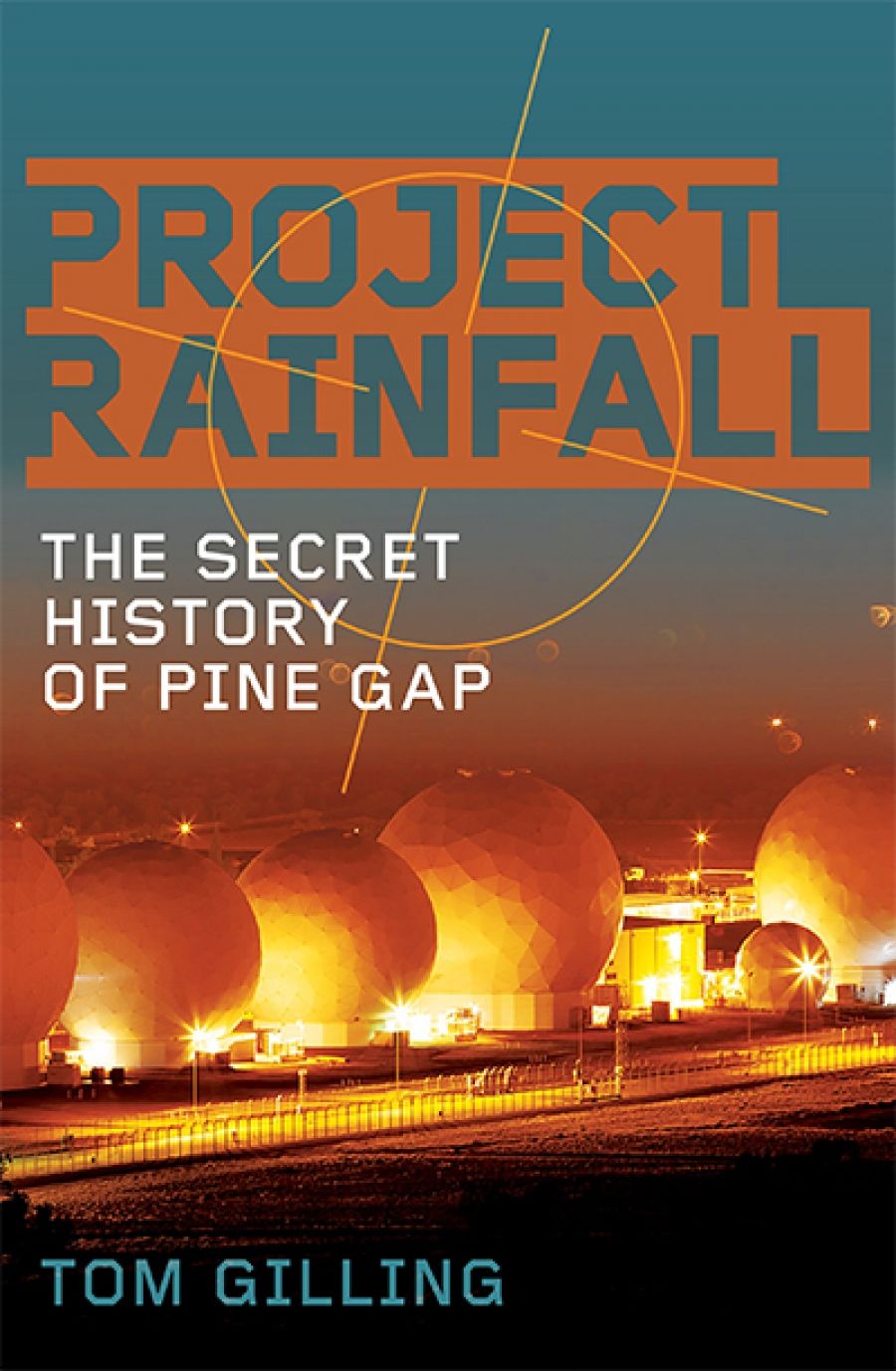
- Free Article: No
- Contents Category: Environmental Studies
- Review Article: Yes
- Grid Image (300px * 250px):

- Alt Tag (Grid Image): Project Rainfall
- Book 1 Title: Project RAINFALL
- Book 1 Subtitle: The Secret History of Pine Gap
- Book 1 Biblio: Allen & Unwin, $32.99 pb, 317 pp, 9781760528430
Australia’s Department of Defence has always kept from ministers and other departments the details of what the Americans from CIA and NSA do, particularly at Pine Gap. The pretence that the ‘Joint Defence Space Research Facility’ was purely experimental, and its original name, have since given way to the more truthful ‘Joint Defence Facility Pine Gap’, codenamed RAINFALL. It would be still more accurate to call the vastly expanded station a ‘US military surveillance and targeting base’.
When our elected politicians in the 1960s to 1990s sought to know what happened at Pine Gap, they were given the mushroom treatment: now they meekly accept it. In the 1980s, when officials and parliamentarians investigated the effect of a possible Soviet nuclear attack on three US bases in Australia, they came to much more reassuring conclusions than two civil society medical studies did, Gilling shows. Since the 1990s, the Pine Gap base has been integral to ‘the Pentagon’s war-fighting machinery’. A future Australian government that tries to extricate it could go the way of Allende in 1973, or Whitlam in 1975. It is part of the machinery that is now being used against Iran.
As many protesters and journalists have found, few Australians can get inside the gates of any of the fifteen ‘joint facilities’ to see what they do on our land. An attempt in August by the Independent and Peaceful Australia Network to give a ceremonial, jarrah-mounted boot to the US Marines in Darwin was politely rebuffed.
 The joint Australia/USA communications facility at Pine Gap near Alice Springs in Central Australia (photograph by Skyring/Wikimedia Commons)
The joint Australia/USA communications facility at Pine Gap near Alice Springs in Central Australia (photograph by Skyring/Wikimedia Commons)
Australia is allowed ‘full oversight’ of Pine Gap’s activities, Christopher Pyne assured parliament: but Ball argued that most of the intelligence it collects is for US strategic interests and irrelevant to Australia. His colleague Richard Tanter has pointed out that Pine Gap is driven, built, paid for, and commanded by the United States. Hence it does not support Australia’s security: quite the opposite. As Afghanistan winds down, the target of Pine Gap’s ‘cryptologic insight’ and war-fighting spy satellites – including fighting nuclear war – is being transferred to China. No wonder Australia is seen in Beijing as China’s enemy.
Gilling doesn’t evaluate the target Pine Gap now presents for a Chinese nuclear attack, which it could be, if China chose to target a US base in Australia as a warning alternative to a direct attack on the United States. Malcolm Fraser’s late revelation, that the US bases themselves pose the greatest threat to Australia, presents us with an urgent obligation to debate this existential question, which has prevailed since the 1960s.
Seeking to do this, Toohey’s and Gilling’s books reveal the tangled web of lies about the US bases that began from Menzies’ initiative in 1965 for a submarine communications base in Western Australia, from which he hoped for political advantage over Labor. In 1966 Harold Holt’s government agreed to host ‘joint defence facilities’ with the United States in three sites, Nurrungar, North West Cape, and Pine Gap. Dedicated to Cold War enmity, Defence Department Secretary Arthur Tange took personal responsibility and derived power from keeping the secrets of the operations, particularly at Pine Gap, to himself and the chief scientist. Apparently they accepted that the CIA’s surveillance from Pine Gap was directed at the Soviet Union, and was not used to spy on Australians and their government. Whitlam knew better, telling Parliament in April 1974 that ‘there should not be foreign military bases, stations, installations in Australia’. Apart from honouring existing agreements, Australia did not want extensions or prolongations, he said. But we still have the bases, and we face the consequences.


Comments powered by CComment